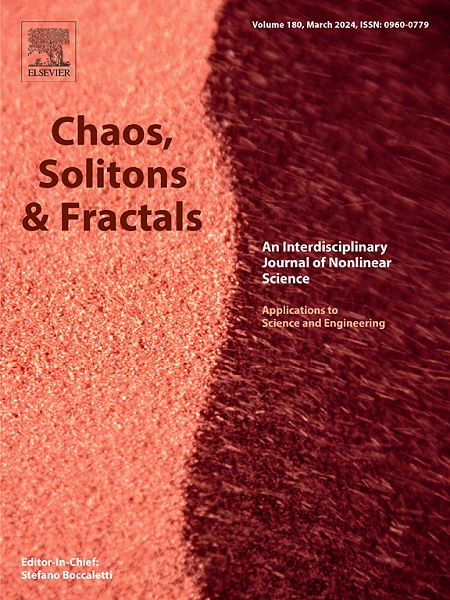非互易群集者的集体行为
IF 5.3
1区 数学
Q1 MATHEMATICS, INTERDISCIPLINARY APPLICATIONS
引用次数: 0
摘要
非互反相互作用在复杂系统中起着至关重要的作用,但它们对具有相位耦合的智能体系统的影响尚未完全了解。本文探讨了非互反耦合对群体行为的影响,重点研究了两种非互反耦合机制:领导机制和自治机制。领导力耦合包括少数“领导者”对群体施加单向干预,显著改变集体运动的模式。自治耦合强调个体根据自身状态主动调整与他人的互动强度,增强系统的灵活性和适应性。这些机制导致了多种动态状态,如平移同步、振荡异步和嵌合体状态。通过数值模拟和统计分析,揭示了非互反相互作用如何驱动复杂的集体行为,并展示了在不同参数空间中的动态演化。本文章由计算机程序翻译,如有差异,请以英文原文为准。
Collective behavior of non-reciprocal swarmalators
Non-reciprocal interactions play a crucial role in complex systems, but their effects on agent systems with phase coupling are not yet fully understood. This paper explores the impact of non-reciprocality on collective behavior in the swarmalator model, focusing on two types of non-reciprocal coupling mechanisms: leadership and autonomous. Leadership coupling involves a few “leaders” exerting one-way interventions on the group, significantly altering the patterns of collective movement. Autonomous coupling emphasizes individuals actively adjusting their interaction intensity with others based on their own states, enhancing the system’s flexibility and adaptability. These mechanisms lead to diverse dynamic states such as translational synchrony, oscillatory asynchrony, and chimera state. Through numerical simulations and statistical analysis, the study reveals how non-reciprocal interactions drive complex collective behaviors and demonstrates the dynamic evolution in different parameter spaces.
求助全文
通过发布文献求助,成功后即可免费获取论文全文。
去求助
来源期刊

Chaos Solitons & Fractals
物理-数学跨学科应用
CiteScore
13.20
自引率
10.30%
发文量
1087
审稿时长
9 months
期刊介绍:
Chaos, Solitons & Fractals strives to establish itself as a premier journal in the interdisciplinary realm of Nonlinear Science, Non-equilibrium, and Complex Phenomena. It welcomes submissions covering a broad spectrum of topics within this field, including dynamics, non-equilibrium processes in physics, chemistry, and geophysics, complex matter and networks, mathematical models, computational biology, applications to quantum and mesoscopic phenomena, fluctuations and random processes, self-organization, and social phenomena.
 求助内容:
求助内容: 应助结果提醒方式:
应助结果提醒方式:


